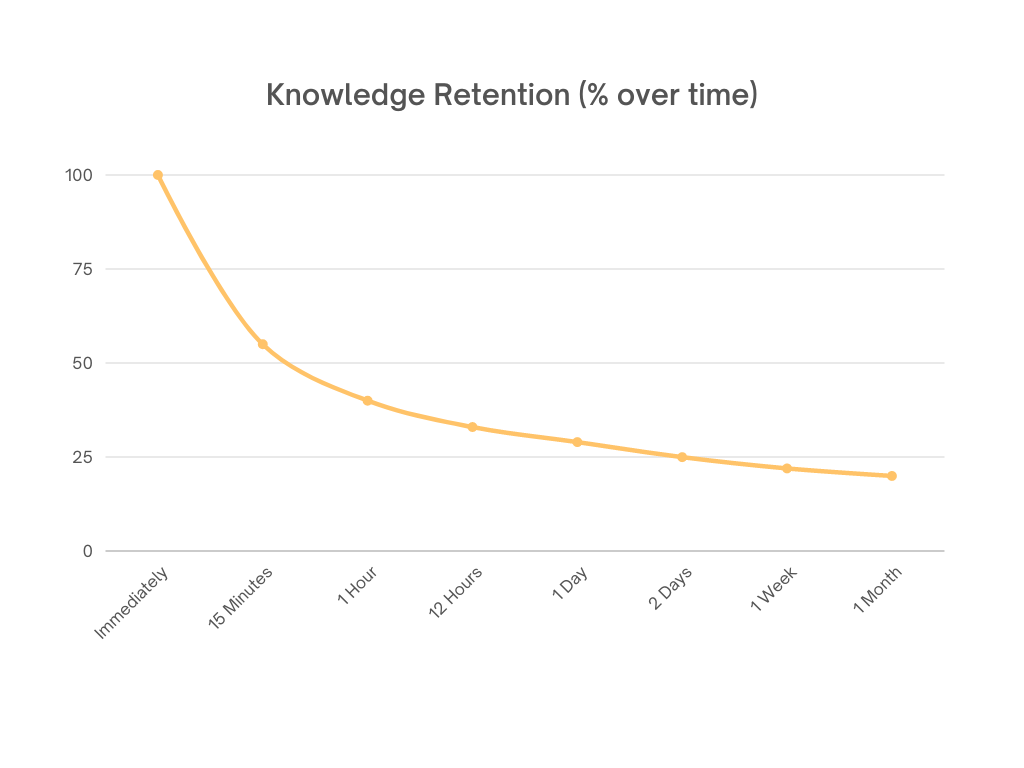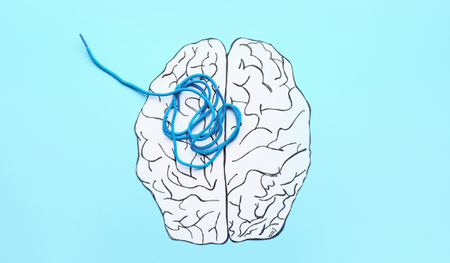Paying attention
Most of us consume a huge amount of information every single day. How many articles, either work or life-related, do you glance at on a daily basis?
Now for a trickier question - how many of those do you actually remember? Think about the last month. You’ve almost certainly read multiple articles in that time. Can you remember a single one? And, if you can remember one, how much detail can you actually recall?
For most people, the answer to all of these questions will be the same: they can’t remember much. This often feels like some inevitable result of the digital age - we spend so much time scrolling on screens that our attention spans and memories can’t hang onto much new information before it gets replaced with the next cat video.
But this doesn’t have to be the case. If you want to learn new things and get ahead in your life and work, there are several scientifically proven methods to improve your retention of information. This is especially valuable for those creating workplace learning programs - if you can integrate some of these techniques you’ll be creating a more effective and efficient L&D strategy.
Why we forget things
While the era of social media has certainly made it harder to hang onto new information, the problem of retaining what you’ve learned isn’t new.
In fact, one of the most groundbreaking studies of the topic - Herman Ebbinghaus’s catchily titled Über das Gedächtni: Untersuchungen zur experimentellen Psychologie (or, in English, Memory: A Contribution to Experimental Psychology) - dates back to 1885.
Ebbinghaus was writing before the modern personal computer was even conceptualised, let alone social media and the attention economy. Yet his findings will be very familiar to anyone who’s ever felt like they just can’t get any new information to stick.
Ebbinghaus’s main finding was that new information - specifically verbal information - was rarely retained over long periods of time. He studied this in so many tests that he was able to actually quantify the average rate at which new learning was forgotten in an equation that looks like this:
Of course, this equation won’t mean much to most people. It didn’t in 1885 either, so Ebbinghaus plotted it onto a graph, known as the "Forgetting Curve" that was much more clearer:

What the curve means
This curve illustrates two key points about how we remember (and forget) new information:
- A huge amount of information (~80%) is forgotten within a month
- Most, but not all, of that is forgotten in the first day
Both of these have been empirically proven in countless other studies. Yet it’s pretty rare that our educational processes account for these facts in how they teach. Whether it’s at school, university or work, our systems for learning take much the same approach: here’s a load of content, look at it for hours, try to remember what you can for a test.
The disadvantages of this, in light of what we know about knowledge retention, are obvious. You learn what you need to know to pass the test, and then a month later you’ve forgotten almost all of it.
In other words, the modern education system is very effective at getting people to pass tests, and very ineffective at getting people to actually learn things - the whole point of an education system in the first place.
There’s a saying that ‘education is what remains after one has forgotten what one learned at school’ - often attributed to psychologist B.F. Skinner. The point being, truly being educated is different to arbitrarily retaining information for a limited period of time.
How to prevent forgetting with spaced repetition
Education needs to be structured in a way that encourages people to truly absorb the information given to them. This structure needs to account for the fact that, due to the forgetting curve, a one-off session is likely to lead people to retain just 10% of the information.
To counteract this problem, many educational psychologists have suggested a technique called ‘spaced repetition’.
Spaced repetition simply means reviewing what you’ve learned at spaced intervals. This way, you give yourself a reminder of the information you learned originally at progressively longer intervals.
Structuring your repetition
A spaced repetition program might be structured like this: you have a lesson, followed up with a reminder session the next day, and another 3 days later, another a week later, and finally one a month later.
You’re aiming to keep ‘topping up’ that knowledge in a way that counteracts the exponential degradation of knowledge that occurs in the forgetting curve.
.png?width=1024&name=Knowledge%20Retention%20(1).png) This diagram illustrates how spaced repetition can be used to counteract the forgetting curve. The aim is to keep jogging that memory before the forgetting curve kicks in. Notice how the lines representing the forgetting curves after the second, third and fourth reminders are progressively less steep. The speed at which the information is lost decreases over time.
This diagram illustrates how spaced repetition can be used to counteract the forgetting curve. The aim is to keep jogging that memory before the forgetting curve kicks in. Notice how the lines representing the forgetting curves after the second, third and fourth reminders are progressively less steep. The speed at which the information is lost decreases over time.
The way that this works is that, paradoxically, the best way to remember things is to allow yourself to forget some of it, then wait for a bit, then relearn it again. You need to let your brain form those neural pathways several times over for them to become strengthened and permanent.
Active vs passive learning
One important thing to remember when you’re doing spaced repetition is to take an active rather than a passive approach. This means that you need to put your brain to work in recalling the information, rather than passively absorbing it.
In practice, this means using active recall, rather than rereading the material or resitting the class. If you want to cement that memory, you should try and test yourself on the information you learned last time, before you look at the material again.
Active recall has been shown to have a significant effect in building the memory, and helps to flatten the forgetting curve when it is repeated over time.
Active learning in one session
One amazing thing about spaced repetition is that it even works within the context of one lesson. A 2011 study tested four groups of students learning words in a language none of them spoke.
The first group was asked to look at the words for a set period of time, and then asked to recall them. The second group was allowed to look at the words for the same amount of time, but split into two sessions, with a test in between. The third group had that time split into three and the fourth into four - each with tests in between all of their sessions.
Remarkably, even though they’d spent the same amount of time learning, and the first group had by far the longest unbroken study time, the improvement in retention for the groups increased exponentially with the more spacing in their learning.
So, the evidence is clear. Enough studies have been done that at this point there is more or less a consensus in the scientific community - spaced repetition is the most effective method you can use for learning things. Not only this, but it’s the most effective way for retaining that information in the long term.
.png)




